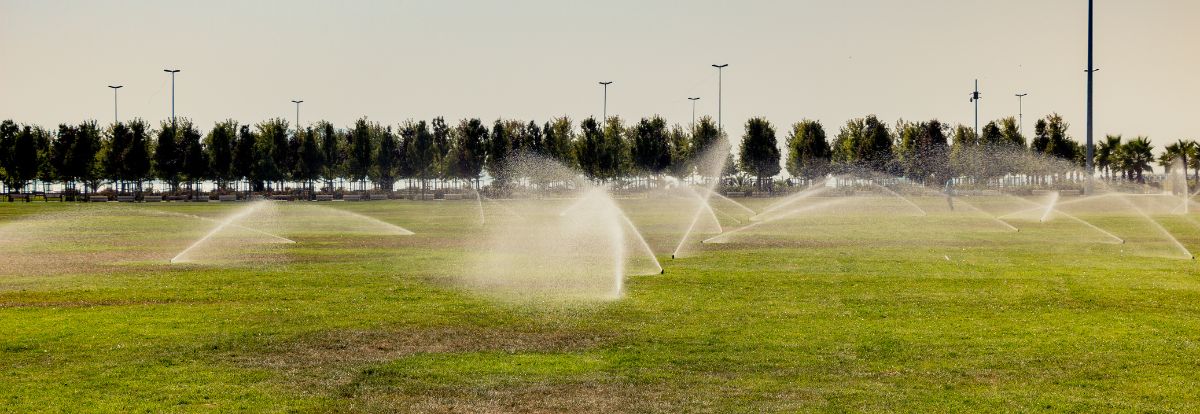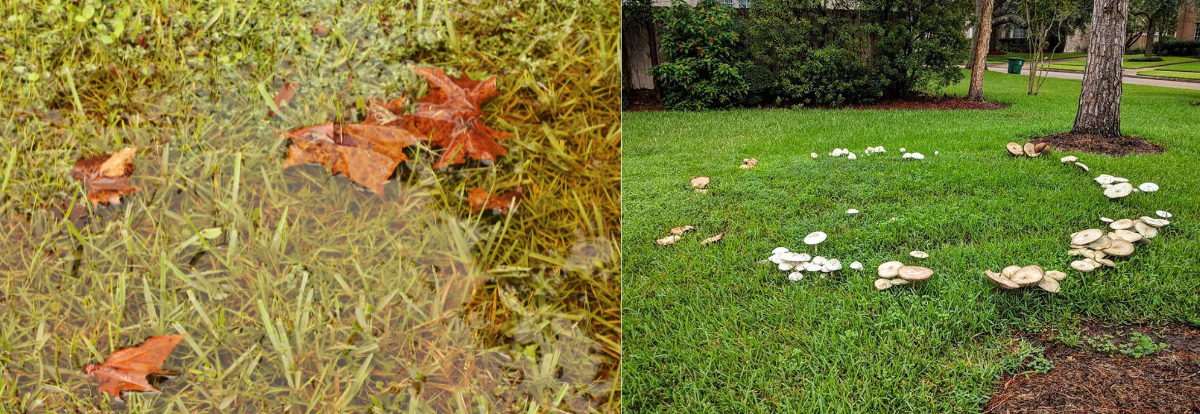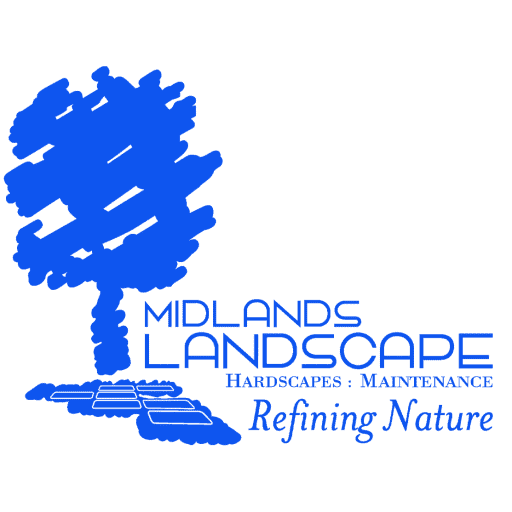Solving Drainage Problems: Signs Your Lawn has Poor Drainage and What to Do About It
Does your lawn turn into a lake after a heavy rainstorm? Or are your feet always muddy after walking barefoot through certain areas of your yard? Both of these are signs that your lawn is not draining stormwater properly and if left unchecked may result in severe problems in the future.
This article will look at the common indicators of drainage problems, their causes, and effective solutions to keep your lawn thriving.
Why Lawn Drainage Matters
We all know that too little water is a problem for our lawns, but too much can be just as bad! Proper lawn drainage is essential not only for the aesthetic appeal of your yard but also for its ecological health and the safety of your property.
Poor drainage can lead to waterlogging, which harms plant roots, and can contribute to erosion. Ensuring adequate drainage is key to a healthy and flourishing landscape.
A serious concern that should not be overlooked is that drainage issues can cause problems ranging from flooding to mold in your home’s basement and foundation. It’s best to not wait for these costly issues to force your hand and instead fix your problems proactively.

Clear Indicators of Yard Drainage Problems
Standing Water:
Lawns should not turn into lakes after a routine rain storm and puddles that linger long after rain are a clear sign of drainage issues!
Soggy Ground:
While the amount of time your lawn remains wet after rain or watering sessions will vary, generally, a healthy lawn with good drainage should not stay wet or soggy for more than 24 to 48 hours after a moderate rain or watering session. If your soil is consistently wet, you likely have underlying drainage problems.
Stunted Plant Growth:
While there are many factors that impact plant growth, plants struggling to thrive may be suffering from too much water.
Erosion Marks:
Erosion lines or erosion marks in a lawn are clear visual indicators of drainage problems and can be a concern for the overall health of your landscape. They are typically characterized by visible lines or gullies in the soil where water has washed away the topsoil.
Fungal Growth:
Fungal diseases are common in yards with poor drainage where excess moisture creates ideal conditions for fungi to thrive. These diseases are detrimental to the health and appearance of your lawn, and cause a wide variety of symptoms.
Fungal Symptoms to Watch For:
- Discolored patches of grass, varying in color from brown to yellow or even white.
- Rings or patterns appearing in your grass.
- Powdery or thread-like substances on the grass blades.

Potential Causes of Poor Drainage
Compacted Soil:
- How It Causes Drainage Problems: In compacted soil, the particles are densely packed, leaving little space for water to enter. This leads to water pooling on the surface instead of being absorbed.
- Diagnosis: Compacted soil is often diagnosed by its hard texture and difficulty in penetration, even with gardening tools. A simple test involves trying to push a screwdriver into the soil. If it’s difficult to insert the screwdriver, your soil may be compacted.
Landscape Grading:
- How It Causes Drainage Problems: If the landscape slopes towards your house or has depressions, water can accumulate in these areas rather than draining away. This can lead to waterlogging in certain areas and dry spots in others.
- Diagnosis: Grading issues are typically identified by observing water flow patterns during heavy rain. Water pooling near foundations or in low spots is a clear indicator. A professional might use tools like a level or transit to accurately assess the slope.
Gutter & Downspout Issues:
- How It Causes Drainage Problems: Gutters and downspouts that are clogged, improperly installed, or misaligned can lead to water spilling over near your home. This can saturate the soil around the foundation and lead to pooling in the yard.
- Diagnosis: Visual inspection during or after rain can reveal if gutters are overflowing or if downspouts are directing water to inappropriate areas. Clogs are easily diagnosed by spotting the overflow or by checking for debris in the gutters.
Impervious Surfaces:
- How It Causes Drainage Problems: Surfaces like driveways, patios, and sidewalks can prevent water from being absorbed into the ground. Instead, water runs off these surfaces and can accumulate in other areas of your yard.
- Diagnosis: The presence of impervious surfaces is straightforward to identify. The key is to observe where runoff water goes during rain events and whether it contributes to pooling in certain areas.
Soil Type:
- How It Causes Drainage Problems: Soils with high clay content tend to absorb water slowly and retain moisture for longer periods. This can lead to surface waterlogging and poor root growth for plants. Check out our article on soil types to learn more about how soil affects watering needs.
- Diagnosis: Soil type can be determined through a soil test or even by feeling the soil. Clay soils are sticky and moldable when wet and hard when dry.
Solutions to Improve Lawn Drainage
Aeration:
- How It Helps: Aeration involves perforating the soil with small holes to allow air, water, and nutrients to reach the grass roots. This helps alleviate soil compaction, allowing water to infiltrate more effectively.
- Best For: Lawns with compacted soil or heavy foot traffic.
Reroute Gutters & Downspouts:
- How It Helps: Adjusting the position of gutters and downspouts can ensure that rainwater is directed away from your house and other sensitive areas, reducing water accumulation.
- Best For: Properties where roof runoff contributes to lawn drainage issues.
Build a Rain Garden:
- How It Helps: Rain gardens are shallow depressions planted with water-loving plants, ideally including native shrubs and perennials. They act as a natural catch basin for runoff, allowing water to be absorbed into the ground.
- Best For: Managing runoff in an environmentally friendly way and enhancing landscape aesthetics.
Permeable Paving Materials:
- How It Helps: Permeable pavements allow water to filter through and enter the ground beneath them, reducing runoff.
- Best For: Driveways, walkways, and patios where traditional paving has resulted in increased runoff.
Install French Drains:
- How It Helps: A French drain is a trench filled with gravel or rock that contains a perforated drain pipe. It’s designed to redirect surface water and groundwater away from an area.
- Best For: Areas with standing water or where water needs to be redirected from buildings.
Grade Adjustment:
- How It Helps: Altering the slope of your yard helps direct water away from your home’s foundation and prevents pooling. Proper grading ensures that water flows towards designated drainage areas.
- Best For: Lawns with improper slopes leading to water accumulation.
Install a Dry Creek Bed:
- How It Helps: A dry creek bed is a gully or a trench lined with stones and edged with plants to mimic the look of a natural creek. It can serve as an attractive drainage solution, channeling water away during heavy rains.
- Best For: Properties with natural slopes and areas prone to runoff.
Install a Dry Well:
- How It Helps: A dry well is an underground structure that collects and disperses excess water. It’s essentially a large hole filled with gravel or rocks, sometimes with a perforated lining, that allows water to slowly percolate into the surrounding soil.
- Best For: Areas where direct runoff needs to be managed, especially in locations where water cannot be easily or aesthetically directed on the surface, like near buildings or in smaller yards.
When to Seek Expert Help
Minor problems like overflowing gutters or clogged drainage pipes are relatively straightforward home improvement projects which can resolve some drainage problems. However, yard drainage issues can be surprisingly complex, and often exceed the average homeowner’s DIY abilities.
Even a small french drain system involves considerable planning and plenty of physical labor. Attempting a DIY project like lawn regrading is generally going to be an act of self-sabotage and is not recommended.
If you are experiencing persistent water drainage problems, we recommend reaching out to a local professional. They will have training to accurately diagnose the root of your problem, and the tools to effectively implement a solution.
The Best Landscape Drainage Solutions For Your Lawn
Making sure that your yard drains properly will help prevent muddy feet, moldy grass, and damage to your foundation. The reasons for a poorly draining lawn can vary from easily fixed clogged gutters and downspouts to more serious issues such as incorrectly graded landscaping or soil compaction that will likely require professional intervention.
Still not sure why your lawn is suffering from drainage issues, or suspect you need a drainage system installed? We provide drainage solutions across the South Carolina Midlands and will make sure your lawn looks it best all year long!

Read More of Our Blogs
